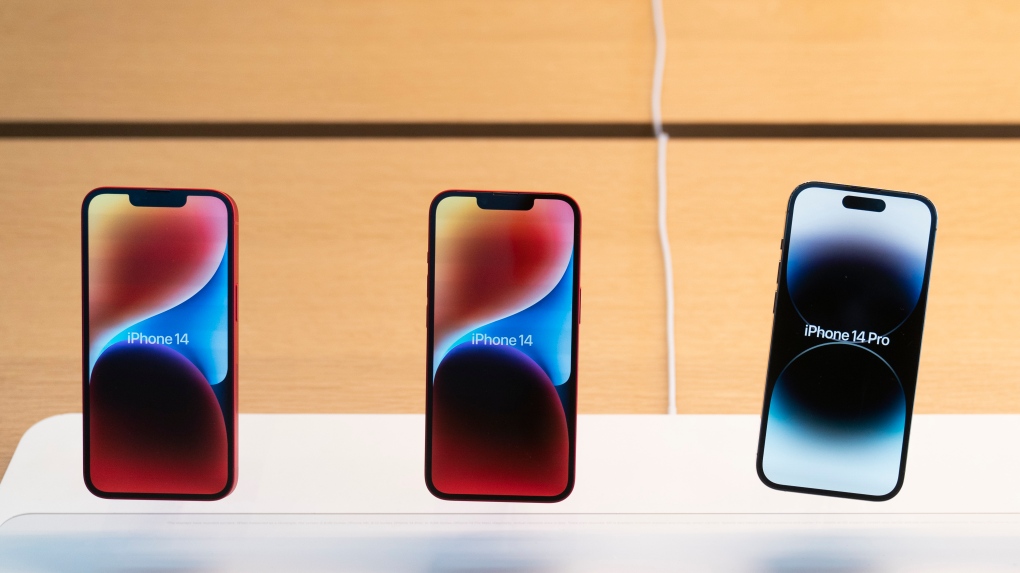As Canada’s major telecommunications companies come under pressure to ensure Canadians can reach emergency responders in the event of a major outage, Apple is rolling out a new service that will accomplish just that.
The Cupertino, Calif.-based tech giant says its new Emergency SOS system, available on iPhone 14 devices in Canada this week, will help people without cell service or Wi-Fi connect to a satellite to report an emergency or call for help even in the most difficult situations. remote places.
“There are always places that you will never be able to fully cover with cell towers like national parks or rural areas, and so when there is an emergency it becomes a problem very quickly,” said Maxime Veron, director marketing of Apple’s iPhone products.
“Imagine you’re hiking, for example, and you’re alone and you fall and break something or you roll your ankle, and night comes and you haven’t seen anyone for an hour. You know you need help because you’re not sure you can get back to your truck or your campsite, so what do you do?”
He said users will be able to tap to answer a series of questions – what’s the emergency, who needs help? — to determine which emergency personnel are best placed to respond. They can also choose to notify emergency contacts programmed into their phones and send their location and the nature of their emergency.
Their phone will then attempt to establish a connection with one of Globalstar’s 24 low-orbit satellites to relay their responses and contact requests to public safety response points, call centers that can dispatch emergency responders. emergency and reach their loved ones.
If they have a clear view of the sky and the horizon, the connection is more likely to be made, but trees, hills, mountains, canyons and tall structures can block the signal, Veron said. In the event that the signal is blocked, the phone will provide instructions on which direction the user should move to try to establish a connection.
“Connecting an iPhone to a satellite flying over 800 miles above and traveling at 15,000 miles per hour is quite a challenge, and it’s actually a very different challenge than connecting to fixed cell towers,” said Arun Mathias, vice president of Apple. president of wireless technologies and the ecosystem.
“Existing satellite phones rely on huge antennas, often these protrude from the device and that obviously wouldn’t work for the iPhone, so we had to invent something different to get the iPhone to communicate reliably. “
The creation of the system began with Apple finding frequencies – signals that help devices connect to networks – that were already used by satellites, then making hardware and software changes, so iPhones could make connections without antennas. cumbersome and messages to emergency responders can be compressed .
The company was able to reduce the average size of messages to a third of their size, meaning it takes about a third of the time to send the message, Mathias said.
Apple has worked with telecommunications companies to ensure iPhones could switch from satellite to cellular services or Wi-Fi, but those companies have no role in how the Emergency SOS service actually works, it said. -he adds.
The service will be free for the first two years, but Apple hasn’t said whether it will charge beyond that period. The service will have a demo mode that people can test out without calling for help.
The launch comes as Canada grapples with how to best facilitate access to emergency services in the event of a telecommunications network failure.
Last week, Telus Corp. experienced an outage in parts of southern Ontario, which prevented customers from calling 911 from a landline.
On July 8, Rogers Communications Inc. experienced an even greater outage that left millions of Canadians unable to reach police, paramedics and firefighters with distress calls.
Rogers was unable to switch customers to competing carriers, despite offers of support from competitors Bell and Telus.
It also was unable to shut down its radio access network, which would have automatically connected customers to another carrier for 911 calls.
The federal government ordered Rogers and other telecommunications companies to develop a backup plan to avoid a similar disruption.
In September, the companies reached a formal agreement to “provide and guarantee” emergency roaming and other mutual assistance during major outages.
This report from The Canadian Press was first published on November 15, 2022.

“Evil alcohol lover. Twitter junkie. Future teen idol. Reader. Food aficionado. Introvert. Coffee evangelist. Typical bacon enthusiast.”
